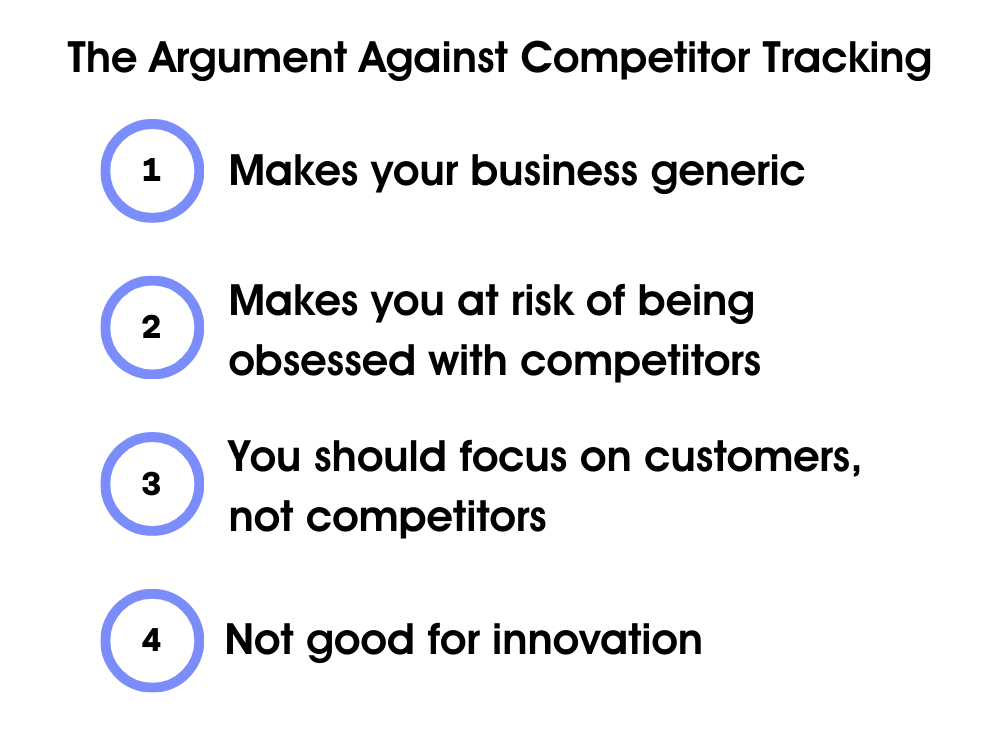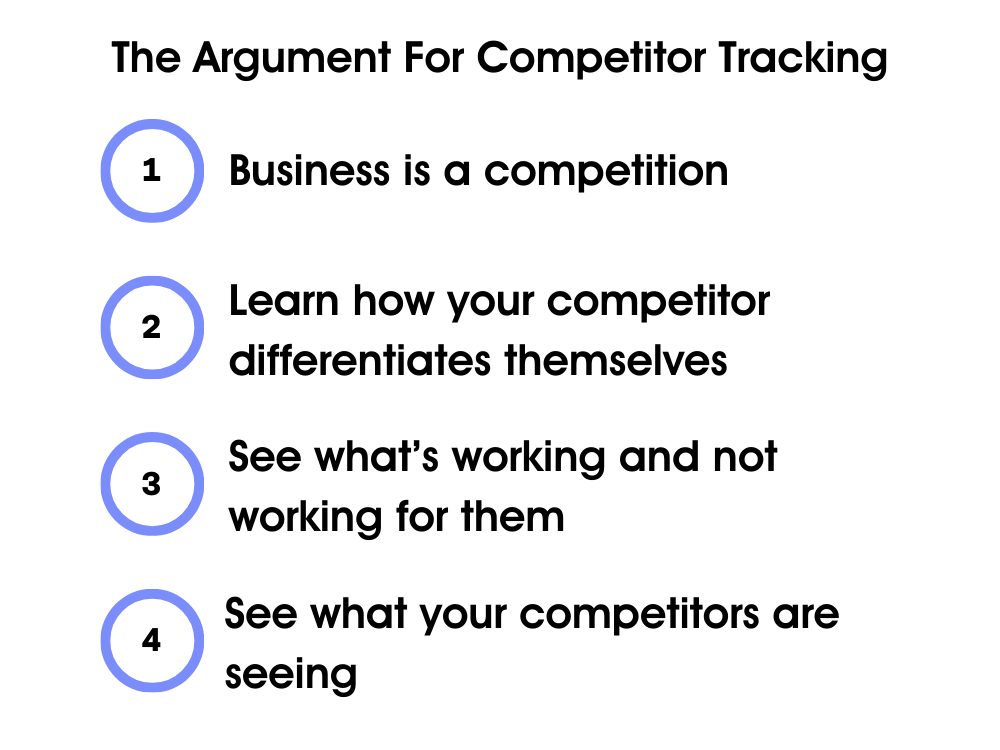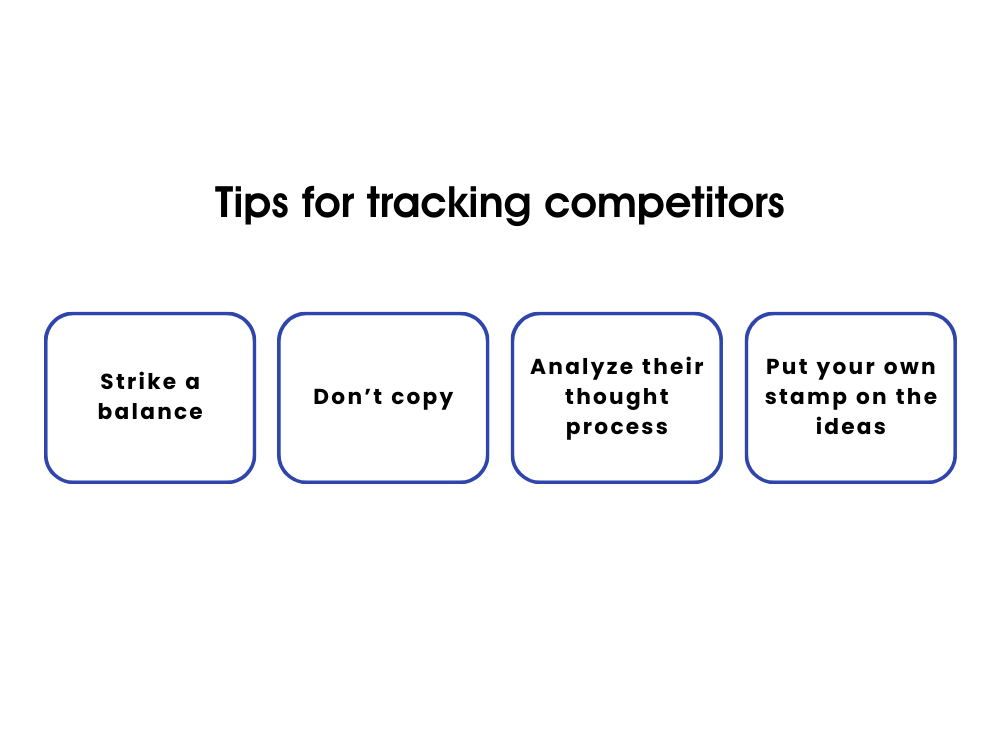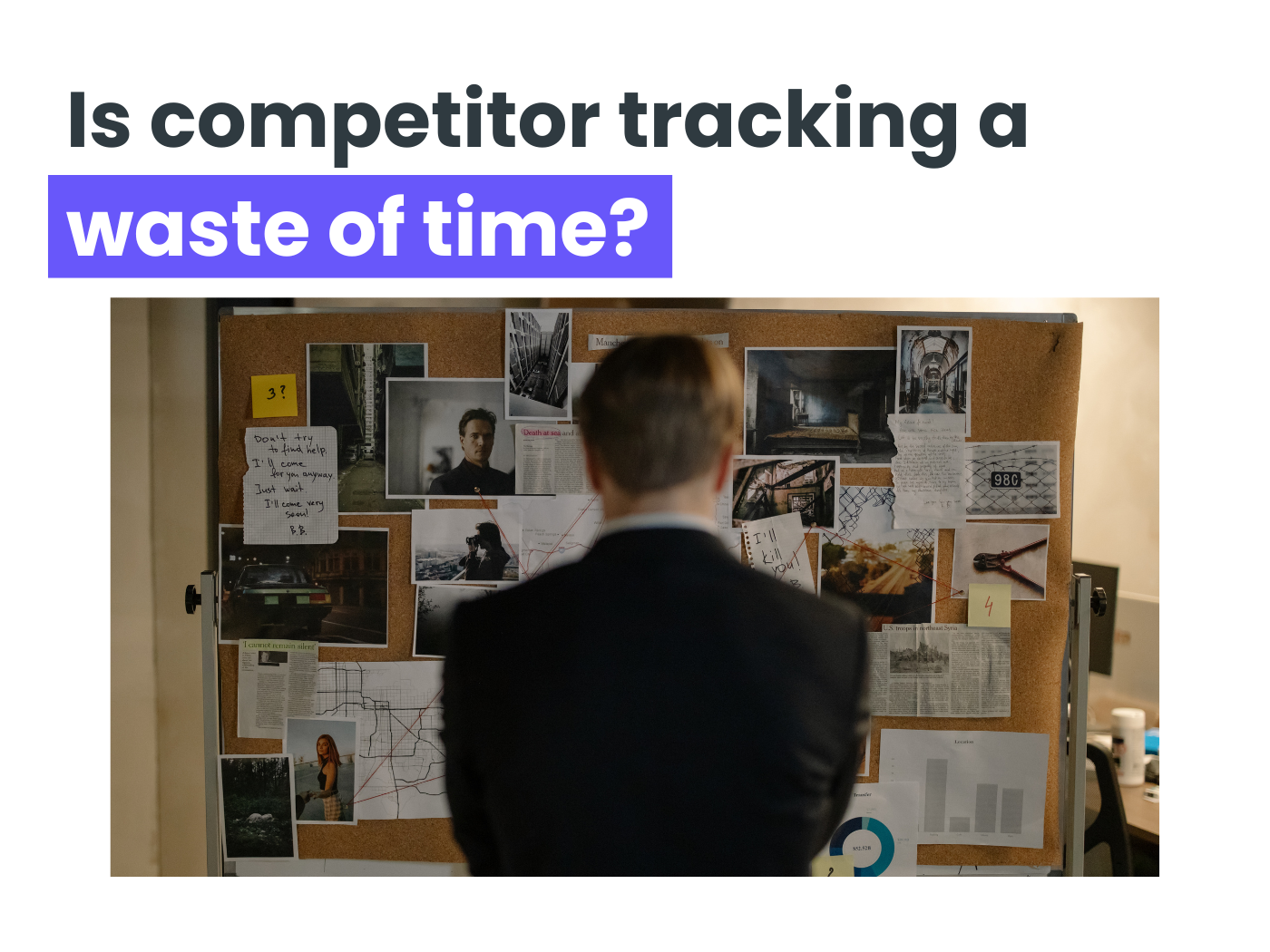Is paying attention to competitors a waste of time?
If you’ve been in B2B, DTC, SaaS, or other fields long enough, you will come across competitors. It’s just the nature of the beast. There is no completely original business or product idea. You are bound to bump into companies with the same or similar concept as yours.
The billion dollar question is what do you do about these competitors. Is it better to ignore them because you want to focus on your own brand’s improvement?
Is it better to track them religiously to see what they’re up to and to outperform them through careful decision-making?
This is what this article will try to answer. If this question piques your interest too, keep on reading!
The Argument Against Monitoring Competitors: Why You Should Ignore Competitors
Some argue against the idea of tracking competitors, saying it’s a waste of time for several reasons.

According to them, paying attention to competitors makes you lose sight of what makes your business unique. In other words, you inevitably start to mimic what your competitors are doing by constantly monitoring them, whether you like it or not.
There’s also a risk of being competitor-obsessed. As you grow more fixated on your competitors, you are in danger of neglecting your business, especially your customers.
Some preach a more customer-centric, instead of competitor-centric, approach. Being customer-obsessed is always seen as a positive. Being competitor-obsessed isn’t.
Customers know best and by studying them, you can anticipate what they need and how you can add more value to your product. You can use customer feedback to refine your product.
Committing to giving the best customer experience is a great way to keep customers coming back. To do that, you don’t need to monitor your competitors at all.
Paying attention to competitors stifles innovation too because one can mistakenly think that the way your competitor does things is how things should be done. You give them too much credit. You try to imitate their success but end up being a carbon copy, a follower, not a leader.
In this argument, competitor monitoring makes you lose sight of what’s important: your customers and your uniqueness.
The Argument For Monitoring Competitors: Why You Should Monitor Competitors
On the other side of the coin, advocates of competitor tracking say that it’s a must because succeeding as a brand means you need to stand out. Business is a competition–you’re competing for market share.

Your customers usually find you while they are comparing options or looking for something better than the product they are already using.
Your customers are looking at your competitors. By tracking the competition, you will find out how they’re able to market themselves differently.
You can learn the techniques they use to snag clients. You can, through observation, see the things they’re experimenting with and which ones are working and not working.
Competitor tracking also protects you from getting caught offguard by changes you didn’t foresee in your industry. It can be lethal to your business if you don’t keep up with the times and see threats in the horizon.
Competitors may be seeing things that you aren’t. If you track them, you will spot those threats too before it crushes you. Threats can be new players in your market, a tide of changing customer preferences, or even the latest microtrend gaining traction in your industry.
According to its proponents, competitor tracking helps you be prepared for whatever comes your way.
Verdict: Should you track competitors?
You have to strike a balance when dealing with competitors. You don’t want to be obsessed with their every move and use up every resource to finding out what they’re up to.
Conversely, you don’t want to ignore them entirely. Ignorance isn’t always bliss.

Regular competitor tracking is necessary and cost-effective for business improvement and agility. It’s necessary because of the things mentioned above.
Its benefits are too good to pass up. The risks of not tracking are also too great.
Secondly, competitor tracking is cost-effective because it reduces trial-and-error work.
When creating campaigns, you don’t know which creatives or copy works best so you will have to put out several versions to test them.
Or for new products, you might not know what the consumer wants so you put out different versions to see what sells.
Competitors may be seeing things that you aren’t. If you track them, you will spot those threats too before it crushes you.
However, when observing competitor campaigns and products, you can see what is already working for them, no investment needed. That saves you time and money, so you can reap the profits faster.
Don’t copy–iterate and improve on your competitors’ work. Don’t be obsessed with what they do and replicate it image by image or line by line. Instead, analyze the thought process behind the campaigns.
Ask: What are your competitors seeing that you aren’t? It might be a clear look at what customers want. It might be a new technology.
Focus on the reasoning behind the activity, and you will get the really important insights. Then, make it your own. Apply those insights for your goals and keep improving, testing, and tweaking until you find your a-ha moment.
Discover your competitive strengths and take advantage of opportunities with our free SWOT analysis template.
If you’d like to learn more about Panoramata, book a demo with us or take it out for a spin by signing up here.
FAQs
Does monitoring competitors stifle creativity?
An excessive focus on competitors can stifle creativity by leading businesses to simply imitate rather than innovate.
What is the main argument against monitoring competitors?
The main argument against monitoring competitors is that it can make a business lose sight of its unique identity and become too fixated on what others are doing instead of focusing on customers.
How can competitor tracking be cost-effective?
Competitor tracking can be cost-effective by allowing businesses to observe what campaigns and products are already working for competitors, thus reducing the need for extensive trial-and-error in their own initiatives.











